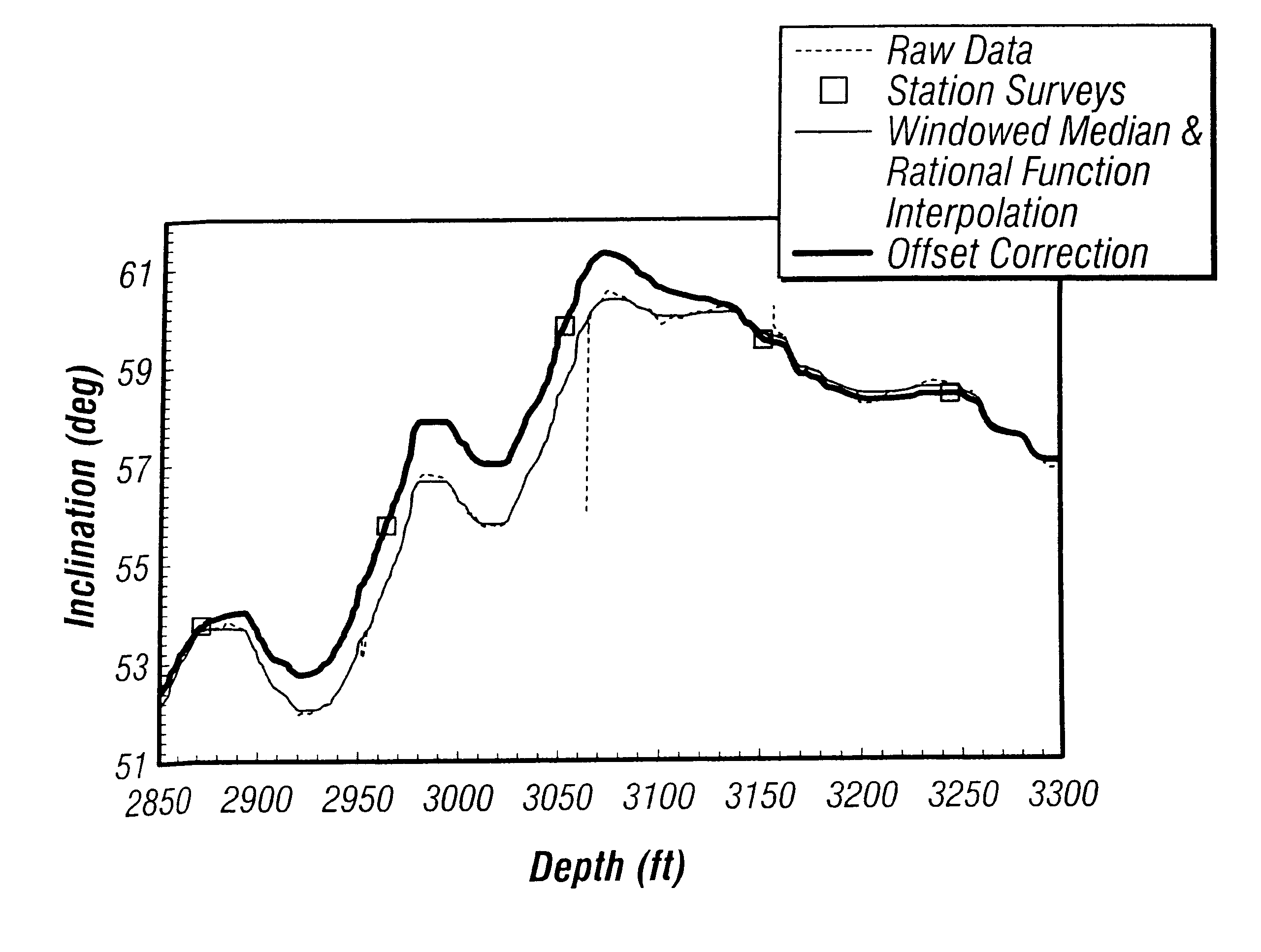Borehole survey method utilizing continuous measurements
a survey method and borehole technology, applied in the field of borehole survey method utilizing continuous measurements, can solve the problems of inability to measure depth, unpredictably influence the trajectory of a drilled borehole, and substantial errors in calculating the vertical depth and position of a survey station of interest, so as to improve the accuracy of estimation, eliminate or reduce errors, and improve the accuracy of borehole spatial and positional computations
- Summary
- Abstract
- Description
- Claims
- Application Information
AI Technical Summary
Benefits of technology
Problems solved by technology
Method used
Image
Examples
Embodiment Construction
The present invention provides a method of processing either continuously obtained raw magnetic and gravitational field measurements or, in the alternative, azimuth and inclination estimates obtained using continuously obtained magnetic and gravitational field measurements made during the drilling of a borehole. "Azimuth data," "inclination data" and "azimuth and inclination data," as those terms are used herein, mean either the raw measurements of the earth's magnetic and gravitational fields or the estimates of borehole azimuth and inclination obtained using such raw measurements of the earth's magnetic and gravitational fields. It is within the scope of this invention to either process the raw magnetic and gravitational field measurements obtained during drilling of a borehole, or to process estimates of azimuth and inclination of the borehole obtained from raw magnetic and gravitational field measurements. The present invention can be effectively used in either case, and the dec...
PUM
 Login to View More
Login to View More Abstract
Description
Claims
Application Information
 Login to View More
Login to View More - R&D
- Intellectual Property
- Life Sciences
- Materials
- Tech Scout
- Unparalleled Data Quality
- Higher Quality Content
- 60% Fewer Hallucinations
Browse by: Latest US Patents, China's latest patents, Technical Efficacy Thesaurus, Application Domain, Technology Topic, Popular Technical Reports.
© 2025 PatSnap. All rights reserved.Legal|Privacy policy|Modern Slavery Act Transparency Statement|Sitemap|About US| Contact US: help@patsnap.com



